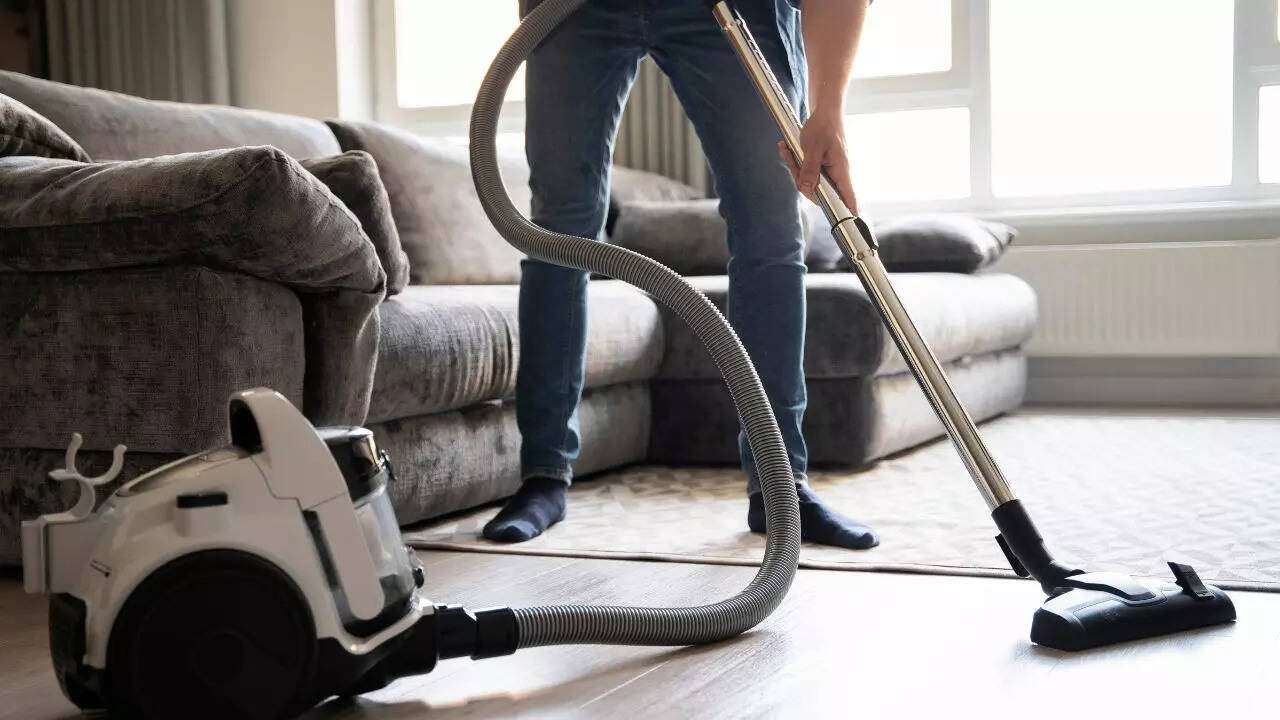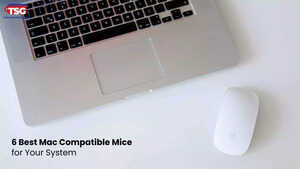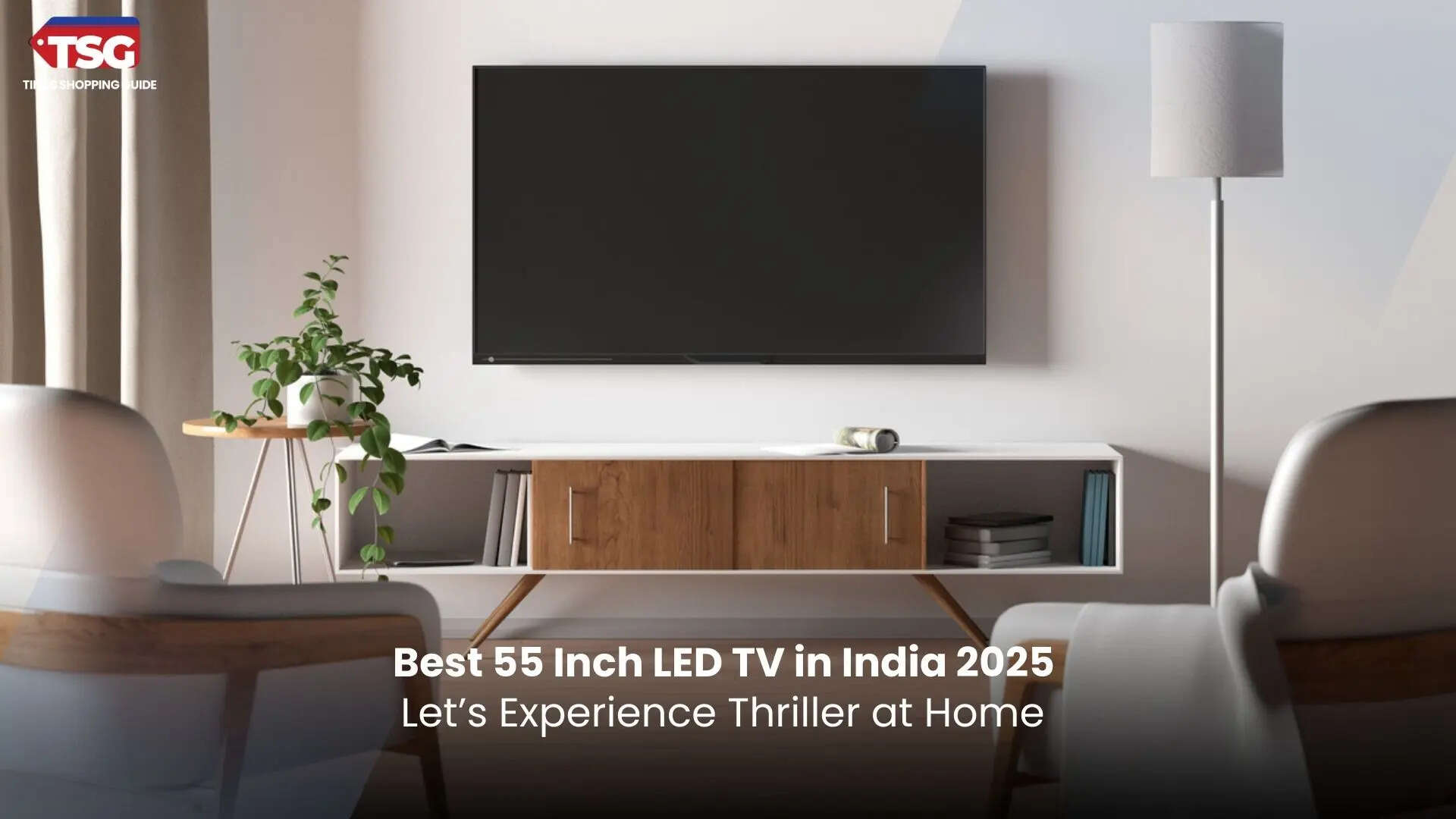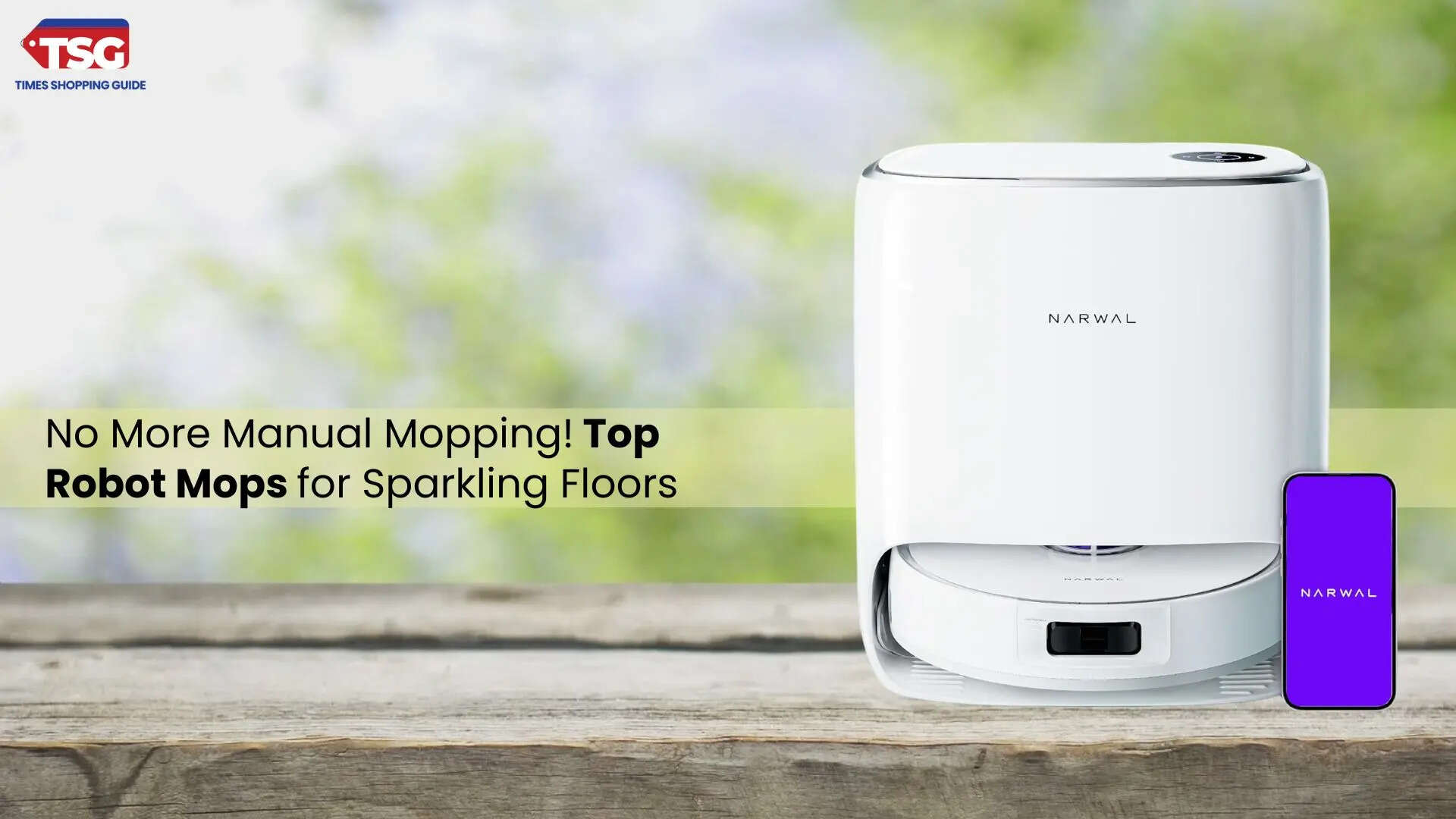- home
- appliances
- home appliances
- vacuum cleaners buying guide how to make the perfect purchase
Vacuum Cleaners Buying Guide: How to Make the Perfect Purchase
A vacuum cleaner is a home appliance designed for cleaning floors, carpets, and upholstery by suctioning dirt and waste into a dustbin or bag. They work by creating suction through a motor-powered fan or impeller, pulling in air along with the dirt particles. The air passes through a filter to trap the dirt while clean air is expelled back into the room. Vacuum cleaners come in various types, including upright, canister, stick, handheld, and robotic models.

Our buying guide will explain how vacuum cleaners function, what your alternatives are, and how to narrow down your search to find the best vacuums for your home.
1. Types of Vacuum Cleaners:
a. Upright Vacuum Cleaner:
Upright vacuum cleaners are powerful, all-in-one cleaning machines with a tall, vertical design. They excel on carpets, offering strong suction and wide cleaning paths. They have adjustable height settings and various attachments which make it efficient to tackle dirt and waste.
- Design: They have a tall, vertical design with the motor and suction head in a single unit
- Features: Often come with adjustable height settings, various attachments, and sometimes features like headlights for better visibility
- Operation: They may be bulkier and harder to operate around furniture compared to other types
- Usage: Ideal for large, carpeted areas due to their powerful suction and wide cleaning path
b. Canister Vacuum Cleaner:
A canister vacuum cleaner is a versatile cleaning tool consisting of two main parts: a canister housing the motor and dust collection system, and a cleaning wand with attachments. It's highly operatable, reaching tight spaces with ease, and offers a range of attachments for various surfaces. Ideal for homes with diverse cleaning needs.
- Design: They have a separate canister unit connected to a wand and cleaning head by a flexible hose
- Features: Offer a wide range of attachments for different cleaning tasks, such as crevice tools, upholstery brushes, and floor nozzles
- Operation: Generally, they operate more than uprights, as the canister can be easily moved around furniture and into tight space
- Usage: Versatile and suitable for various floor types, including carpets, hardwood, and tiles. Also great for stairs and upholstery
c. Stick Vacuum Cleaner:
Stick vacuum cleaner is a lightweight and slim cleaning device that offers hassle-free cleaning for various surfaces. Its compact design allows for easy maneuverability, making it ideal for reaching tight spaces and navigating around furniture. With powerful suction and versatile functionality, it's a convenient choice for quick and efficient cleaning tasks.
- Design: They are lightweight and slim, resembling a stick with a cleaning head attached
- Features: Often cordless for added convenience, with rechargeable batteries. May have fewer attachments compared to uprights or canisters
- Operation: Highly operatable and easy to use, with the ability to reach under furniture and into narrow space
- Usage: Perfect for quick cleanups and light-duty tasks on hard floors and low-pile carpets
d. Handheld Vacuum Cleaner:
A handheld vacuum cleaner is a compact and portable cleaning device designed for quick and targeted cleaning tasks. It's lightweight and easy to handle, making it perfect for cleaning stairs, upholstery, and other hard-to-reach areas. With powerful suction and a variety of attachments, it's an essential tool for tackling small messes with ease.
- Design: Handheld vacuums are compact and portable units designed for small, localized cleaning tasks
- Features: Lightweight and easy to handle, with a variety of attachments for different surfaces and purposes
- Operation: Extremely operatable due to their small size, allowing for precise cleaning in tight spots
- Usage: Great for cleaning stairs, upholstery, car interiors, and other hard-to-reach areas
e. Robotic Vacuum Cleaner:
A robotic vacuum cleaner is an autonomous cleaning device equipped with sensors and navigation technology. It operates independently to clean floors, carpets, and rugs, making it ideal for everyday maintenance cleaning. With features like programmable scheduling and automatic docking, it offers hands-free convenience, effortlessly keeping your home clean and tidy.
- Design: They are autonomous cleaning devices equipped with sensors and navigation technology
- Features: Programmable scheduling, automatic docking and recharging, and advanced sensors to avoid obstacles and falls
- Operation: Limited compared to manual vacuums, as they operate autonomously based on pre-programmed routes
- Usage: Ideal for everyday maintenance cleaning on hard floors and low-pile carpets, providing hands-free convenience
2. Importance of choosing the right Vacuum Cleaner for your house?
a. Healthier Air: A top-notch vacuum cleaner with modern filters captures allergens and dust particles, making the environment cleaner. This helps prevent breathing problems and allergies for you and your family.
b. Saves Money: Though a good vacuum may cost more upfront, it's worth it. It lasts a long time with care, reducing the need for new ones. Plus, it helps keep your floors in good shape, saving you money on repairs in the long term.
c. Protects Floors: Regular vacuuming with the right cleaner keeps floors in good shape. Removing dirt and debris prevents scratches and damage, saving you money on expensive repairs or replacements.
d. Saves Time and Effort: A good vacuum cleaner makes cleaning easier and faster. It sucks up dirt quickly, has useful tools, and is easy to use, so you finish cleaning quicker and have more time for other things.
e. Better Cleaning: The right vacuum cleaner for your home type will clean well. It gets rid of dirt, dust, pet hair, and other messes from carpets, wood floors, hard floors or both, making your home cleaner and healthier.
3. How do Vacuum Cleaners function?
Let’s check how does a vacuum cleaner works. So here we will tell you in steps the working of the vacuum cleaners
Step 1: When you switch on the vacuum cleaner, electricity flows to the motor.
Step 2: The motor starts running, usually an electric motor, which is the heart of the vacuum cleaner.
Step 3: Connected to the motor is a fan or impeller. As the motor runs, this fan spins rapidly, creating suction.
Step 4: At the bottom of the vacuum cleaner, there's an opening called the air intake. This is where the dirty air gets sucked in.
Step 5: Before reaching the fan, the dirty air passes through a filter. The filter traps dirt and dust particles, preventing them from clogging the motor or blowing back into the room.
Step 6: Attached to the vacuum cleaner is a suction nozzle. This part is moved back and forth over the floor. It creates a seal against the surface to maximize suction.
Step 7: As the air flows through the vacuum cleaner, it carries dirt and debris with it. These particles are collected either in a dust bin or a disposable bag, depending on the type of vacuum cleaner.
Step 8: After passing through the filter and collecting dirt, the air is expelled back out of the vacuum cleaner through an exhaust port.Step 9: When you switch off the vacuum cleaner, the motor stops running, and the suction process halts.
4. Factors to Consider When Purchasing Vacuum Cleaner
When buying a vacuum cleaner for your home, several factors are crucial to consider that helps you to choose the most suitable model for your needs:
a. Know your cleaning needs:
Before diving into the world of vacuum cleaners, it's crucial to understand what you need and want from your cleaning buddy. While we'd love for vacuum cleaners to work like magic, they need a little direction from us. Start by thinking about what you need to clean. Are floors your focus, or do you want a vacuum that can handle a variety of tasks? Maybe you need one that's great at getting into tricky spots and cleaning upholstery or curtains. And if you have pets, you'll want a vacuum that's up to the challenge of dealing with pet hair and messes on a regular basis. You need to decide between upright, canister, stick, handheld, or robotic vacuum cleaners based on your preferences and the layout of your home.
b. Size and Portability:
Having a bigger vacuum means there's more space for things like bigger batteries, larger bins, and stronger motors. But the downside is that big vacuums can be tough to move around. If your home is big and you need to move around a lot, go for something lighter. But if you have smaller spaces and need more power, a bigger vacuum might be worth considering. Small vacuum cleaners are lightweight, are convenient for portability. With their attachments, they can access tight spaces effectively. While they handle light dust well, they aren't suitable for floor cleaning tasks.
c. Surface Compatibility:
Consider the types of surfaces you'll be cleaning—carpets, hardwood floors, tiles, or a combination. Ensure the vacuum has suitable attachments or settings for these surfaces.
d. Power and Suction:
Suction power is super important for how well your vacuum can clean, and it's usually measured in units like Pa, KPa, or air watts. Besides having a strong motor, what affects suction power is stuff like how the vacuum is designed, the attachments it comes with, and how it collects dirt. To get the most out of your vacuum, make sure the attachments are firmly attached to whatever you're cleaning. Also, remember that battery-powered vacuums can't run at full suction power for a long time. And if dirt gets stuck in the vacuum, it can seriously weaken the suction power. So, look for models that have adequate power and suction strength to effectively clean dirt, dust, and pet hair from your floors and upholstery.
e. Filtration System:
opt for vacuum cleaners with high-efficiency particulate air (HEPA) filters if you have allergies or asthma, as these can trap small particles and allergens.
f. Bagged vs Bagless:
Bagless vacuum cleaners are becoming increasingly common. Instead of using bags, they have a system to trap dust in a bin that you can empty later. Other vacuums use bags to hold the dust. These bags are easier to throw away but need to be changed often. Cloth bags can be washed and used multiple times. You'll just need to open the vacuum to see if the bag needs emptying. Decide whether you prefer a bagged vacuum cleaner, which requires regular bag replacements but may retain dust better, or a bagless model, which offers convenience but requires frequent filter cleaning.
g. Capacity and Runtime:
Consider the capacity of the dustbin or bag and the runtime of cordless models if you have a larger home or prefer longer cleaning sessions.
h. Noise Level:
Check reviews or product specifications for the noise level of the vacuum cleaner, especially if you live in a noise-sensitive environment or prefer quieter appliances.
i. Maneuverability and Weight:
Evaluate the maneuverability and weight of the vacuum cleaner, especially if you're moving it up and down stairs or around tight spaces.
j. Attachments and Accessories:
Ensure the vacuum cleaner comes with a variety of attachments and accessories to tackle different cleaning tasks effectively, such as crevice tools, upholstery brushes, and pet hair attachments.
k. Warranty and Customer Support:
Look for models with a warranty and reliable customer support in case you encounter any issues or need assistance.
l.Budget:
Set a budget based on your requirements and research various options within that range to find the best value for money.
m. Reviews and Recommendations:
Read online reviews and seek recommendations from friends or family members who own similar vacuum cleaners to gauge their performance and reliability.
Now that we have talked about the importance and features of vacuum cleaners. Let’s check out our top recommendations for the same.
1. Eureka Forbes Wet & Dry Ultimo 1400 Watts Multipurpose Vacuum Cleaner,Power Suction & Blower with 20 litres Tank Capacity,
2. AGARO Regal 800 Watts Handheld Vacuum Cleaner ,For Home Use, Dry Vacuuming,6.5 Kpa Suction
3. Agaro Regal Plus Upright Vacuum Cleaner, 2-In-1, Handheld & Stick For Home And Office Use, 800 Watts , Transparent
4. Dyson V8 Absolute Cord-Free Vacuum Cleaner, Grey
5. Philips PowerPro FC9352/01-Compact Bagless Vacuum Cleaner for Home, 1900Watts for Powerful Suction
6. INALSA 2-in-1 Handheld & Stick Vacuum Cleaner for Home
7. ECOVACS Deebot N10 2-in-1 Robot Vacuum Cleaner,Latest 2023 Launch,4300 Pa Powerful Suction
Conclusions:
By carefully considering the factors and conducting thorough research, you can confidently choose a vacuum cleaner that meets your cleaning needs and provides excellent value for your investment. Whether you prioritize powerful suction, advanced features, or user-friendly design, there's a vacuum cleaner out there that's perfect for you. Happy cleaning!
FAQs:
Is a Vacuum Cleaners suitable for the home?
If your home has a hard floor, a broom and dustpan can be useful. However, utilizing a vacuum cleaner is often more efficient and successful in removing dust, allergens and filth from your home.
Is it OK to vacuum every day?
Vacuuming everyday can help to remove dirt, dust, and other particles from your floors and furniture, which can improve indoor air quality. This is especially important for people with allergies or respiratory issues, as these particles can cause symptoms to flare up.
How many times should I vacuum my room?
Bedrooms, especially those with carpet, should be vacuumed at least once a week and twice a week during allergy season. Less-often used spaces such as guest rooms, sunrooms, or formal dining rooms can be vacuumed less frequently or just before you're expecting company.
Disclaimer: Times Shopping Guide is committed to bringing you the latest products from the best brands. Our selection is based on market research and positive consumer feedback. Times Shopping Guide is also a part of an affiliate partnership. In line with this, we may receive a portion of the revenue from your purchases. Please note that the product prices are subject to change based on the retailer's deals.








